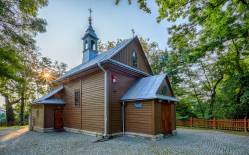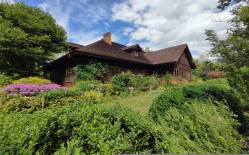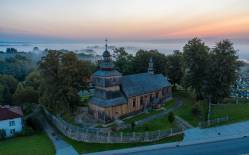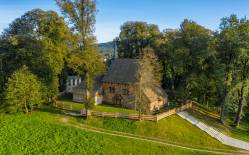A charming little village, in the wilderness of the Beskid mountains, retains a small church which survived the turmoil of history and once was Lemko people’s Greek Catholic tserkva of Dormition of the Holy Mother of God. It was built around 1750, and then reconstructed and altered in the 1800s, when it received is current shape.
After the deportations of the Greek Catholic community in the 1940s, until 2003 it was used as a branch church of the parish of Nativity of the Blessed Virgin Mary in Królik Polski.
The building was thoroughly restored during 2009−2013, owing to which this jewel of wooden architecture was saved from ruin. This is when the original shingled roof was reconstructed, and the iconostasis was renovated.
The church in Bałucianka is a log, three-part building, oriented towards the East, comprising a chancel enclosed with rectangular walls, as well as a post-and-frame tower with tapered walls. The ceilings over the nave and the sanctuary have a form of false octagonal domes. The church is covered with pyramid roofs, each with a small turret on top. The roof and the upper story of the tower are covered with shingles, and the body of the structure is clad with wood boards.
Inside we can see a four-tier iconostasis with lush carvings. It is a combination of two other iconostases, Baroque and late Baroque structures from the latter half of the 1600s, and from the early 1700s, respectively. Some icons from Bałucianka are in the holdings of the Museum in Łańcut and the Museum of Folk Architecture in Sanok. The Royal Doors from this tserkva, dating from the 1400s and representing the so-called Halych school, are the oldest artefact of this type preserved in Poland (in the holdings of the Museum of Folk Architecture). Other relics here include the rococo-style high alter from 1783 with a painting of Our Lady of the Immaculate Conception. On the southern wall a replica of a benevolent image of Christ, originally in Kobylanka.
Next to the church there is a brick belfry built in 1820. One of the bells was taken away by Germans during WWII. The local people resettled from here took one bell with them, and the third bell was stolen. The belfry was also thoroughly restored in 2015. A small bell was placed in the belfry.
A broken bell with the date 1929, which can be seen on the outer wall, does not come from this tserkva. In the lower part of Bałucianka there was once an oil mill, well-known in the whole area. The village was also famous for the wooden figures produced here. This tradition is continued today, as well.
Photo: Krystian Kłysewicz, Bogusław Sołtysik
Gallery
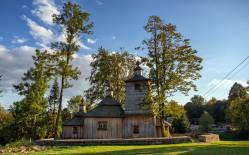
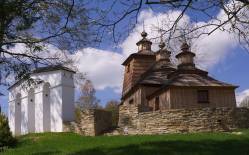
Recommended venues on the Trail



This website has been modernized with the financial support of the European Union under the Cross-Border Cooperation Programme Poland-Belarus-Ukraine 2014-2020. The responsibility for its content lies solely with the Podkarpackie Regional Tourism Board and cannot, in any case, be treated as a reflection of the position of the European Union, the Managing Authority, or the Joint Technical Secretariat of the Cross-Border Cooperation Programme Poland-Belarus-Ukraine 2014-2020.










